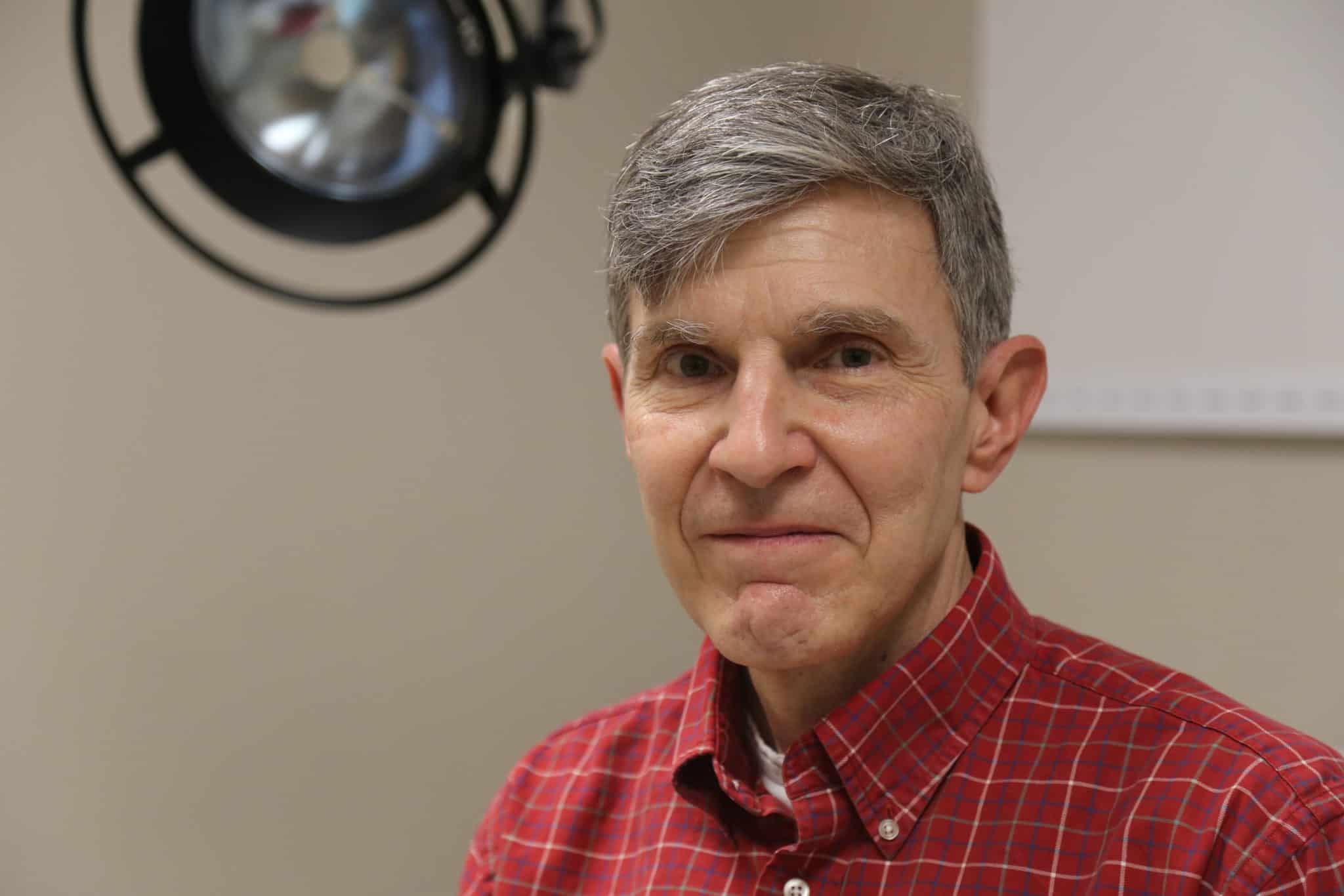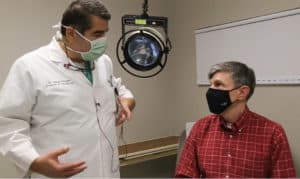View Larger Image

Jon Norcross
Marathoner Thanks Heart Team at UAMS
|
Sixty days after a sudden cardiac arrest, Jon Norcross, 60, of Little Rock finished a half marathon. It was an exceptional journey to recovery, and he took a moment in January to extend his gratitude on social media for everyone who kept him alive, including a team of cardiovascular experts at UAMS Health.
“Cardiac arrest is usually caused by heart disease, blocked coronary arteries, weakness in the heart or long-standing high blood pressure,” said J. Paul Mounsey, M.D., Ph.D., director of the cardiovascular program at UAMS. “In Mr. Norcross, we couldn’t find any obvious cause for the cardiac arrest.”
Norcross was at home eating lunch when he collapsed Oct. 26. His wife called 911 and administered CPR until MEMS arrived. The first responders reacted with advanced cardiovascular life support protocol. Norcross had stable rhythms by the time he arrived at the UAMS Emergency Department.

Hakan Paydak, M.D., cardiologist and director of the electrophysiology program visits with his patient Jon Norcross.
Hakan Paydak, M.D., cardiologist and director of the electrophysiology program, rushed to see him. Before proceeding with any invasive procedures, Paydak said they wanted to make sure Norcross’ brain function was preserved during the event.
“We admitted him to the medical intensive care unit and cooled him for 48 hours,” Paydak said. “Lowering body temperature immediately after a cardiac arrest can reduce damage to the brain, raising the chances of a full recovery.”
Fortunately, all Norcross’ vital organs survived the cardiac arrest. His first memory following the event was about four days later, and it was still foggy.
“Although I had been conscious, I was not really aware and couldn’t remember clearly,” Norcross said. “My wife said people had to explain things to me over and over again. So I really appreciate their patience and understanding. The best thing was being able to pick up the phone and call her because she could explain everything that happened.” Paydak analyzed Norcross’ coronary angiogram and found no significant narrowing in any of the vessels. His heart was also pumping normally, according to the echocardiogram.
“Since there were no obvious signs of what caused the cardiac arrest, we decided to implant a defibrillator for secondary prevention,” Paydak said.
The implantable cardioverter-defibrillator (ICD) is a small box-like device placed under the skin to monitor heart rhythms and detect irregular heartbeats.
“It’s like having the rescue squad in your hip pocket,” Mounsey said. “We implanted the ICD under his arm with a wire that ran on the outside of the chest up the breastbone. While the heart is beating normally, the device takes no action. But if his heart ever goes into cardiac arrest, the device recognizes that and administers a lifesaving electric shock to the heart.”
Subodh Devabhaktuni, M.D., implanted the device. Devabhaktuni is a cardiologist and electrophysiologist who specializes in heart rhythm problems.
At UAMS Health, the multidisciplinary team in heart and vascular care includes cardiologists, interventional radiologists, vascular surgeons and cardiothoracic surgeons. They collaborate to provide patients comprehensive care that covers all areas of cardiovascular medicine, from hypertension to heart disease to cardiac arrests.
Clinical trials have shown the ICD to work very well in athletes and marathon runners. Norcross leads an active lifestyle and has been running for 16 years with friends as well as cycling. He’s completed 25 marathons and qualified for the Boston Marathon in early 2020.
As he gained his bearings, it was important for him to be able to move around.
“I knew I needed to get out of bed as soon as I was stable enough just to start moving and get back to some degree of normalcy,” Norcross said. “The nurses were always so great about helping me disconnect from all the tubes so that I could walk through the wards. Each day I was a little more mobile and able to get around more.”
Once he was home, Norcross began walking regularly with his wife. He could feel the toll the cardiac arrest had taken on his body as he worked to regain his strength and endurance. In January 2021, he was able to complete 13.1 miles – just 66 days after the event.
“Running a half marathon (at a much-reduced pace) is not a miracle, but a by-product of many folks who deserve my heart-felt (sorry, couldn’t pass that one up!) thanks,” Norcross wrote on his Facebook page.
He also thanked his wife, MEMS, Paydak and his family and friends who offered support to the family.
Norcross believes he is alive today because of his initial fitness, his wife quickly calling 911 and administering CPR, the training of the MEMS crew, and the quality of care he received UAMS. He researched what happened to him and said he felt good about all the decisions that had been made for his care.
“I know they did everything that should have been done in order to help me survive and recover from my cardiac event.”
